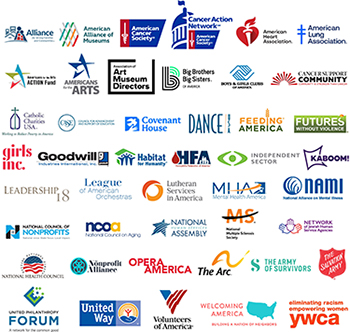Equity, Diversity, and Inclusion
Building Your Nonprofit’s Approach to Racial Disparities and Socioeconomic Mobility
People of color and those living in poverty face significant, long-standing barriers to accessing quality primary and mental health care. Among the most common barriers are the high cost of care, lack of adequate insurance coverage, and lack of quality and/or culturally competent care. These challenges directly lead to racial disparities in health and well-being outcomes and are compounded over generations, often blocking the pathway to economic mobility.
With racial equity, diversity, and inclusion as the guidepost, the Alliance for Strong Families and Communities/Council on Accreditation (Alliance/COA) is committed to pursuing sustainable systems change so that all people can realize their full potential through social and economic mobility (SEM). Realizing more equitable systems requires connecting and driving efforts to improve SEM, change policies, and empower families and children. Community leaders are swiftly mobilizing in adaptive ways to support their communities. Their responses have elevated opportunities for improving:
- Community assets
- Racial equity
- Flexible infrastructure
- Mental health awareness
Community Assets
Community-based organizations that have established themselves as trusted, safe places for connections and resources are tremendous assets to their communities. They are often staffed and led by people who live in the community, allowing them to build deep relationships and align their mission with the community’s goals.
Asset-based community development asserts that neighbors can work together to build upon their strengths to improve their communities. Mutual aid efforts taking place all over the country and around the world are allowing people who are struggling to be active in creating solutions for themselves and their neighbors. The act of working together to build community assets and develop resources contributes to community strength in small and large ways, including building the cohesion and trust that are the foundations of collective efficacy. A unified community further yields increased political influence, representation, and accountability.
Racial Equity
As institutions, lawmakers, and organizations draft the changes that lead our society, there is an opportunity to embed racial equity into programs and policies to generate meaningful, systemic solutions that address institutional racism. Increased diversity and representation in different institutions, such as schools and hospitals, yield more effective programs, improved outcomes, and impact.
Organizations must look internally and build talent pipelines that position people of color in leadership roles. Building a talent pipeline for people of color means addressing the systemic racial wealth and employment gaps. As the Alliance/COA continues its equity journey, we will identify programs and strategies that advance social and economic mobility and address racial health disparities through a racial equity lens.
Flexible Infrastructure
Funding, data, and technology are elements of foundational infrastructure necessary for community-based organizations working with communities to realize opportunities for social and economic mobility. The pandemic has heightened their importance. Flexible funding and adequate technology have become of paramount importance for both organizations and families adapting to the new reality. Many community-based organizations are creatively and innovatively adapting to challenges caused by the pandemic and educating their philanthropic partners.
Funding
Many community-based organizations are in a perilous financial position, facing challenges that plague the social sector at large. This contractual challenge reduces organizations’ ability to create flexible solutions because unrestricted funds must be used to plug program budget gaps.
Related to this, very few federal funding opportunities reflect the interconnected nature of SEM; many have narrow eligibility requirements and limited program and service options. Organizations are adept at braiding resources from multiple funding sources to create the flexible, multisystem supports that empower families. However, these structural challenges put a significant burden on the organization, with the result that many needs go unmet.
Data
Donors often fund community-based organizations based on data on outputs. While it accounts for activity, it eclipses the nuanced story of community needs and agency and the ultimate goal of impact. Disaggregated data and human-centered design illuminate disparities and illustrate the need to fund and pilot equitable solutions. They also
- enhance the understanding of the client and community experience,
- inform more responsive programming, and
- yield greater impact.
Technology
Technology is vital for connectivity and SEM, especially with the need for social distancing. Students and families often need internet access and several computers for school and remote work. While many community-based organizations are now offering virtual telehealth services, the community can only utilize them if they have the appropriate technology. Many organizations have worked with businesses and philanthropy to provide laptops, tablets, and Wi-Fi where needed.
In some cases, technology may be an emerging opportunity for client connection and community service provision. A virtual opportunity may open more doors for some, where barriers such as health or work prohibited them from in-person attendance.
Mental Health Awareness
Many communities endure great uncertainty in daily life. That uncertainty puts an extra toll on staff and providers’ work. Mental health support is a foundation for all the pathways to social and economic mobility, both for the community and for the staff members who work with them. When considering ways to sustain the energy behind the human service sector and our network, stakeholders emphasized providers’ and leaders’ opportunities to connect and share relief and encouragement.
The Alliance/COA is committed to providing space for the network to share their struggles and build off one another’s strengths. The sector must capitalize on the expanding awareness of systemic inequities – including racial health disparities – lead efforts to learn from our communities, and build sustainable pathways to SEM.



